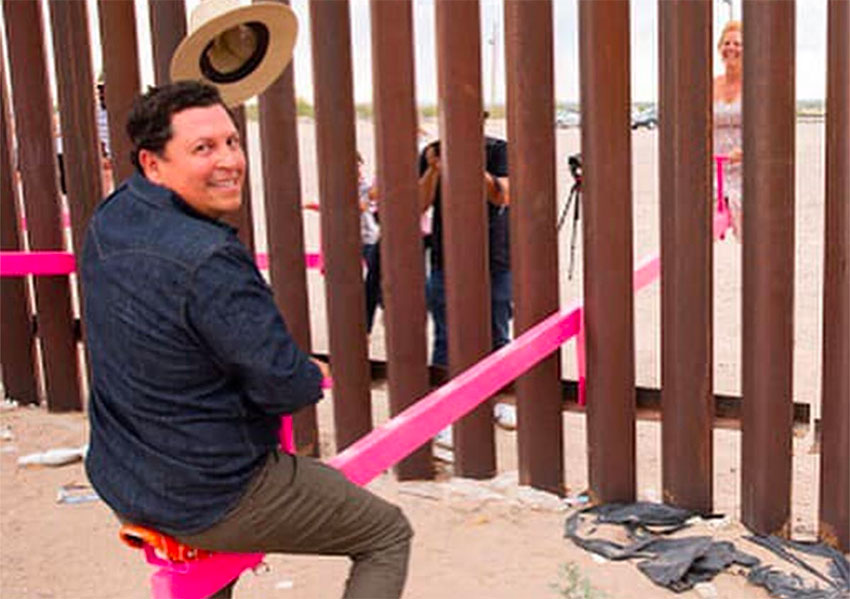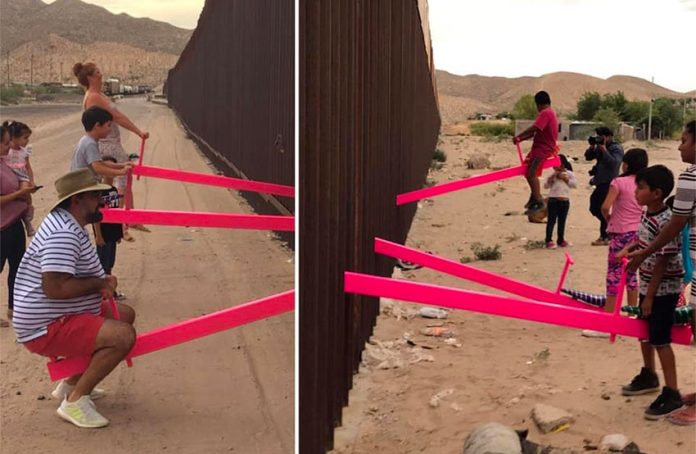There has been no shortage of innovative protests and projects at the barrier between Mexico and the United States in recent times.
A monumental photo of a toddler peering over the fence. A cross-border picnic. A plan for a binational bar. A human wall. A wall made of cheese. Massive hugging events.
On Sunday there was a new one: three bilateral seesaws – perfect metaphors for the interconnectedness of Mexico and the United States: what happens on one side of the border has a tangible effect on the other side.
Two professors from California came up with the border fence seesaw project 10 years ago but only on Sunday did it come to fruition.
The bright pink seesaws spanned the border fence between Anapra, a neighborhood of Ciudad Juárez, Chihuahua, and Sunland Park, New Mexico, allowing Mexican and American children to play together despite the physical division between them.

“The wall became a literal fulcrum for U.S.-Mexico relations,” Ronald Rael, a University of California architecture professor and one of the two creators of the project, wrote on Instagram yesterday in a post featuring photos and footage of the seesaws in action.
“. . . Children and adults were connected in meaningful ways on both sides [of the border] with the recognition that the actions that take place on one side have a direct consequence on the other side,” he added.
Rael, who is also the author of the book Borderwall as Architecture, said that bringing the so-called “Teetertotter Wall” to life was “one of the most incredible experiences” of his career and that of Virginia San Fratello, a design professor at San José State University and the other architect of the seesaw project.
The border wall event “was filled with joy, excitement and togetherness,” he wrote.
The seesaw project won widespread praise among other social media users, and video of the “ups and downs” of children playing has gone viral.
“The symbolism of the seesaw is just magical. A border wall will not keep us from our neighbors,” Claudia Tristán, a member of United States presidential hopeful Beto O’Rourke’s campaign team, wrote on Twitter.
“Beautiful reminder that we are connected,” wrote Mexican actor Mauricio Martínez on the same social network. “What happens on one side impacts the other.”
The Texas-based Refugee and Immigrant Center for Education and Legal Services (RAICES), also applauded the project on Twitter, writing that “art is such a powerful vehicle for change.”
Quoting Rael, RAICES added:
“A beautiful installation at our southern border that reminds us that: ‘Actions that take place on one side have direct consequences on the other.’ We are all connected. We are all one.”
Source: El Mañana (sp), El Universal (sp), Newsweek (en)
